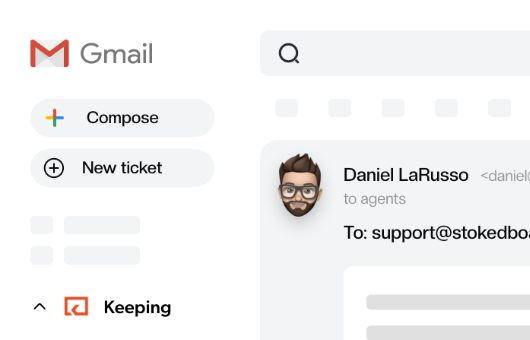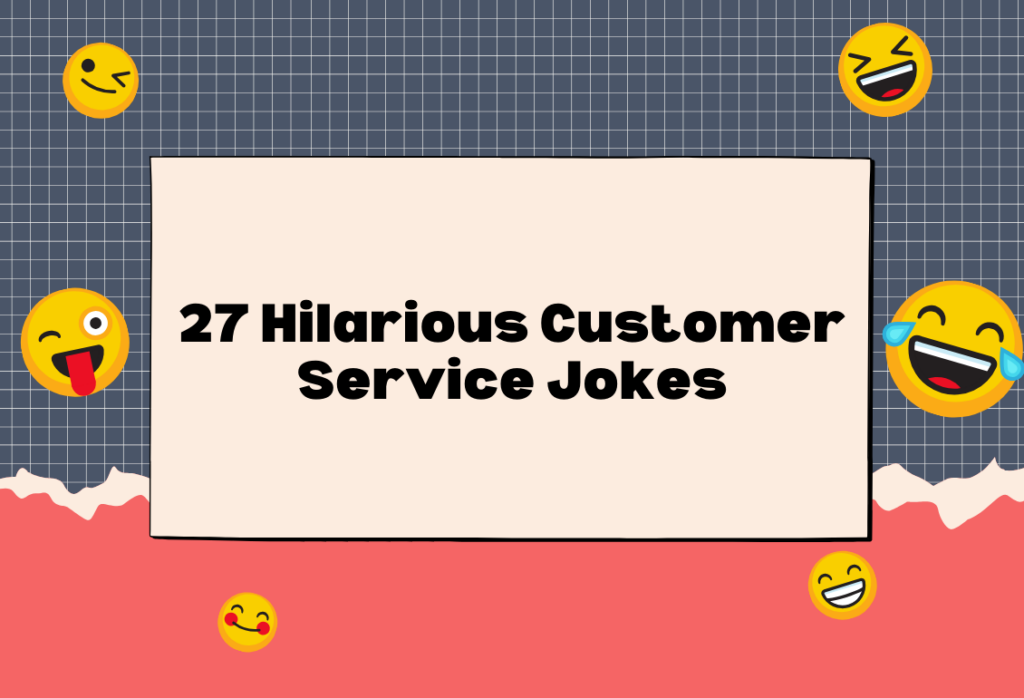
Bad Customer Service Explained
Imagine this: You have a great business going, the sales are going up each day, but one day one your customer support representative fails to help a customer experiencing problems. The customer gets frustrated, and proceeds to create a twitter thread about your poor customer service. It becomes viral and your business comes crashing down.
Imagine this: You have a great business going, the sales are going up each day, but one day one your customer support representative fails to help a customer experiencing problems. The customer gets frustrated, and proceeds to create a twitter thread about your poor customer service. It becomes viral and your business comes crashing down – one bad customer service story and your reputation is tainted forever.
This is surely not a scenario you want to imagine, lest want it to happen. So, as a business your top priority is to avoid bad customer service.
However, before getting on to the part of avoiding poor customer service, you must understand the following:
- What classifies bad customer service?
- How does it affect your business?
- What are the causes of bad customer service?
- How do you avoid it?
You can deliver excellent customer service only when you’re aware of what bad customer service is. And this is exactly what we’re talking about in this piece. Let’s begin!
What classifies bad customer service?
Bad customer service is when customer service agents fall short of what it is that its customers expect. Some of the most common instances of terrible customer service are delayed or no response, rude customer support representatives, ignorance of customers’ problems, and occasionally inefficient assistance procedures.
“Bad customer service is when your staff does not understand how to handle objections or issues from the customers. This can be caused by lack of training, lack of empathy, and also just wrong timing, unfortunately.” – Keith Brooks, former Professional Services Manager
A study by Consumer Reports showed that:
- 66% of consumers were despised by long hold periods.
- 70% of customers felt helpless when customer support representatives could not provide valuable help.
- 75% of customers felt irritated when the customer support agent was rude.
These statistics are perfect examples of what bad customer service is. Bad customer service would be when your customer does not feel valued. Terrible customer experience also occurs when a rapport of willingness to serve cannot be established with a customer.
How does bad customer service affect your business?
You may not realize it but poor customer service has quite an impact on your business. To put this in perspective, an issue by Forbes talks about how businesses lose $75 billion a year only because of poor customer service.
Let’s understand the repercussions further by looking at these impacts of bad customer service:
- Bad Word of Mouth: According to a report by Marketing Connections, a customer who is unhappy with your brand will tell 9 to 15 people about it. There’s also a chance of 1 in 10 people telling 20 others about it. This results in negative word-of-mouth for your brand and, in the long run, a poor reputation among consumers.
- Loss of Existing Customers: If a customer runs into a problem with your product and cannot get a solution quickly, they will surely be disappointed. They may start to resent your brand and the product. Eventually, they will leave your brand. If the experience is too bad, they might even leave instantly. Whatever the reason, poor customer service will drive away existing customers.
- Fewer Conversions: Long waiting hours, rude customer support, and useless responses will irritate potential customers, and they will most likely drop the idea of buying from you. Such a pattern will ultimately bring your conversions down. A Salesforce Research found that 89% of consumers will most likely purchase after a good customer service experience.
- Lesser Profits: If you’ve been noticing, it is a cycle. One thing leads to another, and finally, a bad customer support experience will mean lesser profits for your business. The companies with the worst customer service start losing their customers, which leads to a dip in sales and ultimately a drop in profits. There comes a time when the company’s working financial requirements cannot be met, and the company shuts down.
Even if you have the best product, rates, offers, and deals for your customers, they won’t be able to enjoy these qualities if your customer service is lacking fully.
Examples of poor customer service
What better way to explain something than with an example? To help you better understand what bad customer service looks like, here are seven examples of bad customer service stories.
1. Long periods of no response
Nothing could be more aggravating for your customers than waiting hours for a response from your customer service team. A survey by PRWeb of more than 2,500 people found that 60% of respondents thought sitting on hold for more than a minute was excessive. Strengthening this further, another study by Velaro found that nearly 32% will not wait on hold at all.
In the image below, a twitter user can be seen complaining about how she never heard back even after the query was tagged time sensitive.
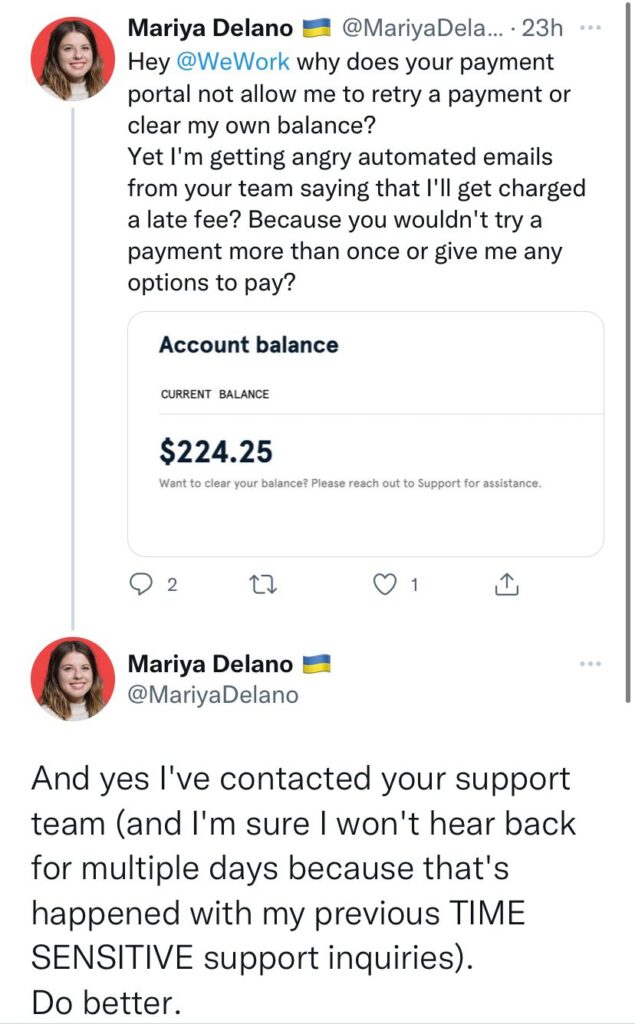
Today’s customers like speedy responses and aren’t willing to settle for anything less.
2. Failure to acknowledge a mistake
An article by Business Insider talks about how a customer discovered a pricing discrepancy between a reputable supermarket brand’s in-store and online prices. The response wasn’t beneficial when the customer complained about this mismatch to an employee. The blame was put on the company policy, and then came a viral news story.
As a responsible business, your first step is to acknowledge a mistake has been made. Your customer must feel a sense of empathy on your part. It must reflect that you are accountable for any problems arising after a customer purchases from your brand.
3. Ignorance of customer feedback
A report by Microsoft found that 52% of people worldwide feel that more companies need to act on the feedback they provide. A simple social media page or a more formal survey process are the platforms most businesses offer for customer feedback. But far too many businesses collect this feedback and do nothing with it. When a customer’s input is consistently ignored, it leads to a bad experience for the customer.
4. Redirecting to your website
In most cases, a customer has already scoured your website before coming to you, so there’s no point in constantly redirecting them to your website. Oftentimes, a chatbot will keep telling a customer to look at the FAQ section. This does not prove to be very helpful.
A customer recently went on Twitter complaining about how Europe’s leading train line’s customer support kept redirecting them to the website. This shows how such redirections can ultimately lead to bad word of mouth.
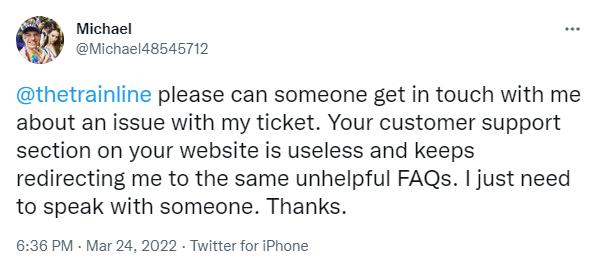
5. Lazy Listening
“If you are not taking care of your customers, your competitors will.” – Bob Hooey.
One of the primary customer service skills is actively listening to your customer’s problems. Your customers want to tell you what they want, but not repeatedly. A study by Microsoft showed that 21% of people from the US feel that not having to repeat themselves is an essential part of customer service.
An example of lazy listening would be when singer SZA tweeted about being racially profiled in 2019, and instead of quickly coming up with a remedy, Sephora chose to reply with a vague message that wasn’t even an apology.

6. Lack of Competent Personnel
Not having personnel that’s knowledgeable and efficient is a recipe for disaster. A case of Amazon Customer Support getting lost in translation turned out to be quite chaotic.
A customer suspected phishing and reached out to live chat support. The person assigned to him failed to comprehend his communications, gave delayed and inadequate responses, and failed to recognize the true nature of the issue. Ultimately the customer took matters into his own hands and posted the entire conversation online.
According to Market Charts’ research, 65% of US people find it annoying when the information given to them is pointless and useless. In a nutshell, incompetent customer support personnel lead to a poor customer service example.
7. Confused Bots
What’s worse than incompetent personnel? A confused bot system. Help Scout did a little experiment wherein they talked to a bunch of bots. Their experiment found that the most frustrating chat was the one where the bot responded with responses that were completely unrelated to the query.
Moreover, a 2018 survey revealed that humans prefer to talk to real humans instead of chatbots. So what happens if a customer who already refuses to communicate with a bot is met with a bamboozled bot in response? A negative customer service experience.
8. Multiple Transfers
Yes, transfers are unavoidable sometimes. Your customers understand that too. However, when it happens multiple times, a customer is bound to get frustrated. The lower your transfer rates are, the better. It gets worse when your customers have to repeat themselves, leading to wastage of their time.
“I made several calls to the customer support and received no response from them. They know only one thing: that they will transfer the call to the service department.”
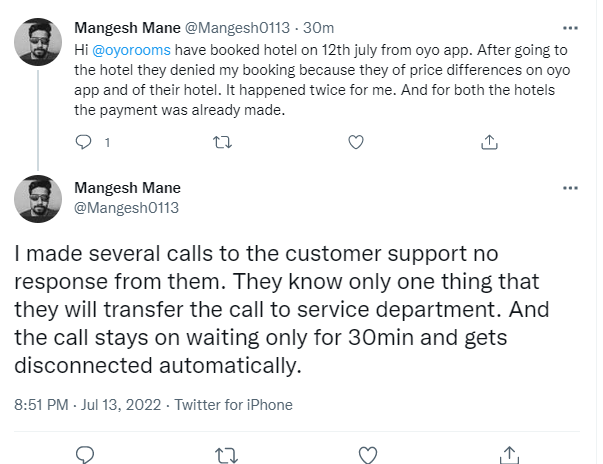
What are the causes of bad customer service, and how to fix them?
No company intentionally wants to deliver a negative customer service experience, so why does it happen? There are a lot of different causes due to which bad customer service may creep in. Let’s talk about them now.
1. No agents to talk with.
As previously mentioned, customers prefer talking to a human agent instead of a bot. When the option to speak to an agent is not available, customers get frustrated and, ultimately, a bad customer support experience.
As a business, you do need automation, but relying entirely on it would also be wrong. Agents will be required for time-sensitive issues, and your business must be prepared to supply them when necessary.
How to fix this
Allocate more of your budget towards hiring and training customer support representatives. Categorize tasks that can be automated and assign the rest for human support agents. In this way, a support agent won’t be overburdened as well. Your aim should be to use automation to support human agents. Do not use automation as a substitute for human agents.
2. No omnichannel support
Omnichannel presence is significant for today’s businesses. Not being present where your customers are will lead to a bad customer support experience. Your customer may have to go to your website for support if you’re unavailable on social media. This would lead to more effort on their part. Similarly, if a customer isn’t able to call a customer support representative, they’ll be disappointed.
How to fix this
Perform thorough research on where your customers are. After that’s done, start building a presence on those channels. If your customers hang out on Twitter, you need to be present there. Similarly, if your customers prefer emailing you, ensure your email customer support is solid and responsive.
Being omnipresent would also mean having more than 1-2 customer support channels available. Brands that cater to their customers offer customer support across different channels like Live Chat, Social Media, Mail, and Calls.
3. Hiring the wrong people
A customer support experience will be defined by the people handling them. As a result, hiring the wrong customer support representatives will only bring bad customer service examples. A lousy hire could have a negative attitude or be inattentive to the customer’s needs. Since your customer support representative will handle customer queries, you must hire the ones who will be able to do it efficiently.
How to fix this
The first rule in customer service teams is to treat consumers with respect and empathy. Hire personnel that are interested in resolving client issues. Be sure to vet all of your possible applicants thoroughly. Find out what skills they have and how important they might be to the goals of your business. Observe how well they can manage customers in various circumstances.
4. Lack of proper training
A customer support representative requires proper training. If adequate training is not provided, your representative will fail to meet your customer’s expectations. According to Statista, 27% of Americans reported that ineffective customer service leads to most frustration. Customers become frustrated when customer service professionals are not equipped to offer practical answers.
“If you can’t have a trained customer support rep, then it’s better to not have one at all. CSRs have to be trained on the product, trained how to answer difficult questions, and how to treat customers in a humanizing way. Untrained or inadequately trained CSRs will ruin the customer experience and drag your brand name into the mud.” – Patrick Icasas, former Content Marketing Manager for Catalyst.io
How to fix this
To provide world-class customer service, train your agents. Using role-playing games, encourage your agents to be courteous and composed during calls. Agents should be taught how to reply on various communication routes.
Customers are aware of the goods and services you offer. So, people anticipate that you are more knowledgeable than they are. Make sure your representatives are well-informed. They are competent in providing accurate responses to complex queries.
5. Lack of communication strategies
Just like marketing, customer service requires the use of specific communication strategies as well. Generally, when a customer reaches out to you, they are not happy. When a customer support team is not aware of how to proficiently handle an unhappy customer, a bad customer service experience occurs. Using communication strategy ensures that a customer feels valued and hopeful about getting a solution to their problem.
How to fix this
Fixing such an experience requires your customer support team to use effective communication strategies. Some of these are:
- Asking the right questions that depict you understand their situation.
- Listening actively and not assuming what the customer would say.
- Using language that shows empathy and avoiding negative tones.
- Explaining technical answers without jargon
- Slow response time
6. Slow response time
66% of US adults hate when the response time is too slow. In most cases, customers will hang up or drop the chat if they are put on hold for too long. Customers today anticipate instantaneous support from customer service departments. Unquestionably, slow response time becomes one of the biggest sources for bad customer service stories.
How to fix this
There are many different ways in which you can improve your response time. The most basic one is, of course, having an adequate number of customer support personnel. Apart from this, you can do the following:
- Create an automated response to let customers know they will hear from you soon.
- Categorize your tickets depending on the impact, the problem’s complexity, the amount of time needed to fix it, and the urgency of a problem.
- Use canned response templates for frequently asked questions.
Parting Words
Your primary weapon is great customer service. Not addressing it is equivalent to shooting oneself in the knee. Your business exists only if your customers exist. And with poor customer service, keeping your customers would be difficult.
Your efforts need to be focused in ensuring your customers do not have a bad customer service experience. Using the right tools and hiring the right people will help you deliver better customer service experiences and ultimately grow your business.
Join Keeping now, and we’ll make it much easier for you to provide excellent customer service.
Join 150+ teams that are sharing inboxes with us
The easiest way to upgrade your shared Gmail account. There’s no credit card is required.
